Step by step Elder
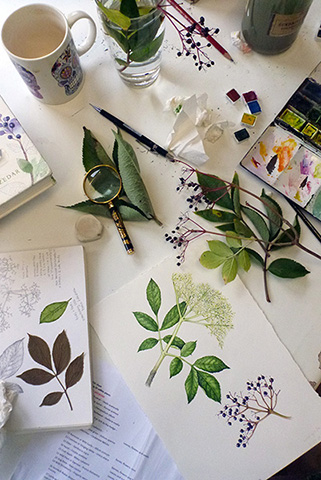
There’s a really wonderful job I’m working on right now; about 20 botanical illustrations of different edible plants for a fold out chart, to be produced by the Field Studies Council. Other blogs on this job include the step by step of painting a dog rose, and the step by step painting of a wild strawberry plant. This week I’m illustrating the Elder, Sambuccus nigra.
It’s autumn, and although I’m fortunate enough to be able to find (slightly battered) elder leaves, and a few berries still hanging on, there’s no elder blossom anywhere. This is why I keep my sketchbooks, from the notes taken back in 2010 I can readily reconstuct the form and colour of a froth of elder flowers.
Materials
I use mechanical pencils like the Pentel P205, which hold their sharp tips beautifully well, and draw the pencil rough onto Fabriano hotpress watercolour paper. As both flowers and berries are edible, both need to be included. They don’t appear simultaneously, so a careful positioning of two separate branches bearing flower and fruit makes this clear.
To paint, I predominantly use winsor & newton watercolours, and a series 7 winsor & newton brush, they cost a lot but they’re the only brushes that actually do the job consistently well.
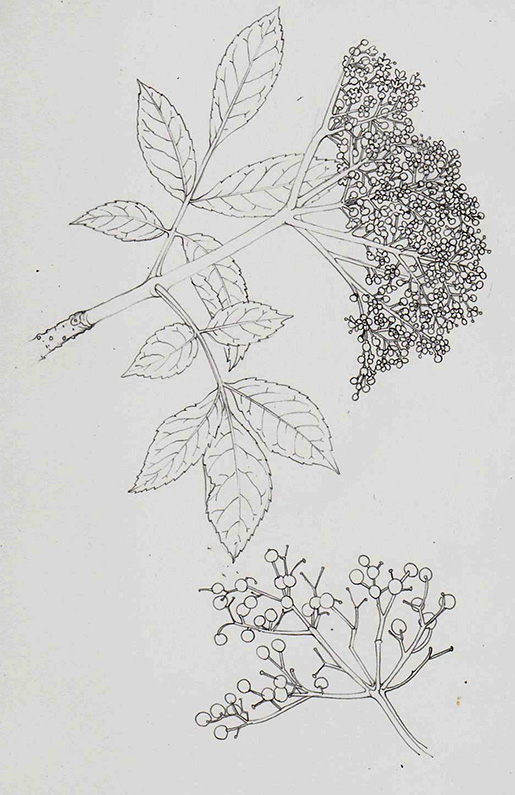
Rough Pencil illustration of the Edler Sambuccus nigra
Pencil rough of the elder and starting to paint
I wait for feedback from the client on the pencil rough, and in this case there aren’t any changes required. Before painitng, I go and gather some more live specimens to work from – always so much easier than working from printed reference, or even my sketchbooks.
The photo below shows my desk as I start to work on the “colouring in”; since the areas to be painted are comparatively small as a ratio of the whole paper, I seldom bother to stretch the paper for these botanicals.
The cup of tea is as important as every other part of the set up, probably more so!
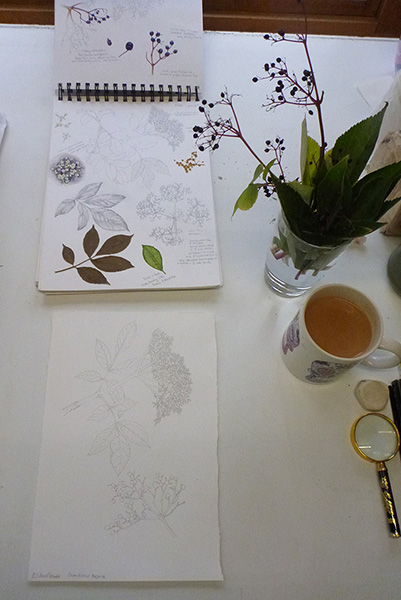
Plotting the elder leaves
I plot in the darkest areas of the elder leaf using a mix of terre verte, yellow ochre, a lot of cadmium yellow pale, and a pthalo green.
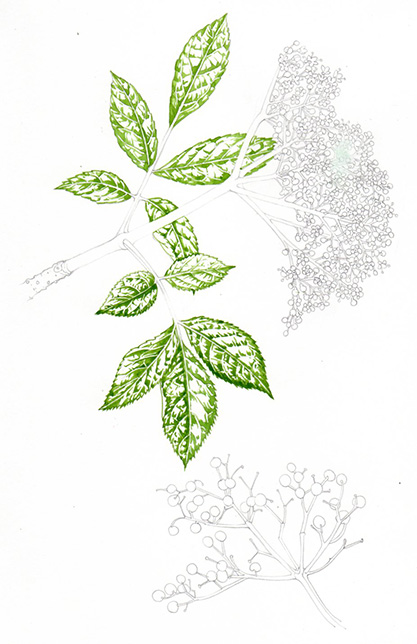
As I paint, I constantly refer to the leaves; and often get cramp from holding one leaf in the same position for long stretches of time.
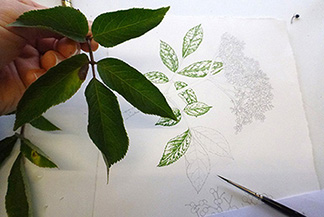
Next, I pop a wash on top of the dark areas; a watery version of the first mix. This helps smooth the leaves and make the shadows less stark. The lightest areas remain bright, the white of the paper.
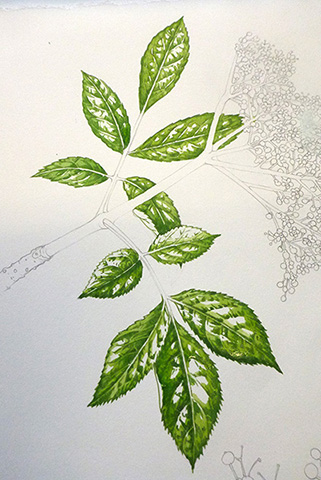
I put an even paler wash, heavy with yellow ochre, ontop of these leaves, and then work into the darks again.
Painting the elder flower
Next up is the flower. The approach to this froth of blossoms is just to draw the perimeter of each flower in a yellow-green, on top of the pencil line. Cadmium yellow light and sap green, in a very pale and watery mix do the job nicely.
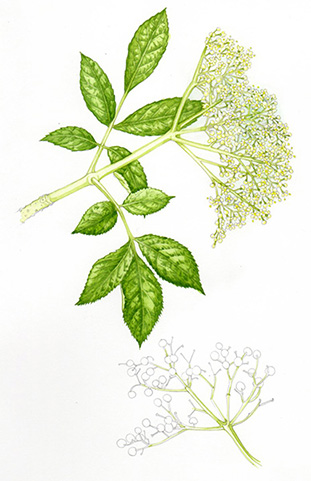
Finishing off the leaves
I return to the leaves, picking out the sharp points of the leaf margins and the darkest shadows is key here; I use sap green mixed with yellow ochre, a touch of blue, and some purple.
Then comes a unifying wet wash of yellow ochre and a touch of sap green; I keep this very liquid and cover all areas of the leaves. Once again, I re-visit the leaf margins, veins, and darkest shadows; sharpening and tweaking the areas of darkest darks.
Painting the berries
Onto the berries which are a gorgeous mix of purples, browns and reds. Plotting in the darks first, I use purple, pthalo blue and vandyke brown. The mix is quite dy, and when I pop a wash on top (making sure I leave the white of the paper as shine) I add some alizarin crimson to the mix. The stems of the berries are a joy to paint, all flushed with pink. I painted the stems before the berries because they were so tasty to examine and record.
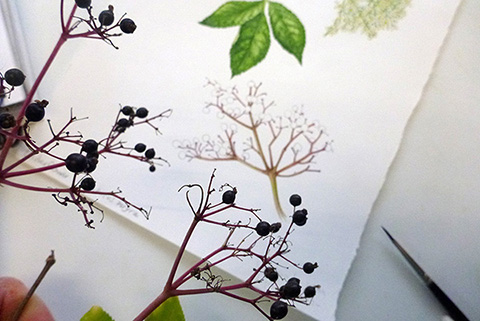
Another moment or two on the darkest shadows, mixes of blue and purple, and the illustration is complete.

Below is my desk at the end of the day – leaves, paint, brushes and reference materials all over the shop. The painting’s complete, the tea cup is empty. Once I’ve made another cuppa, I’ll return and have a long hard look at the illustration before considering it done. And then I tidy my desk, ready for the next day’s botanical illustration.



Bravissima, complimenti, ho trovato molto interessante quello che hai scritto, io sto facendo un erbario dipinto dei fiori spontanei che crescono nell’isola dove abito. Cari saluti
Silvana Bertizzolo
Ciao Silvano
Che progetto meraviglioso! Scommetto che il progetto sarà fantastico e richiederà molto tempo: divertiti! Spero che questo abbia senso, mi piacerebbe fingere di parlare correntemente l’italiano ma Google Translate ti dirà altrimenti! Grazie Lizzie